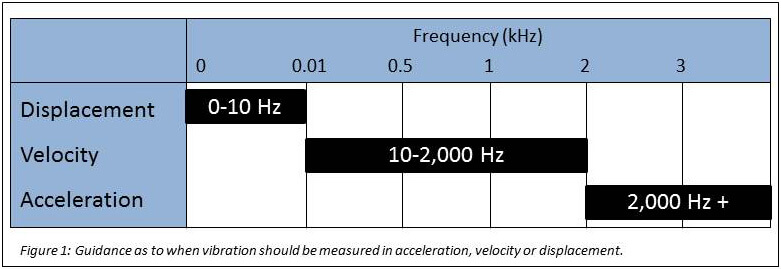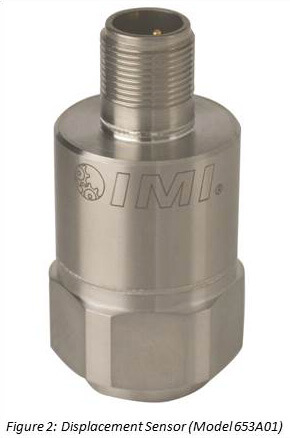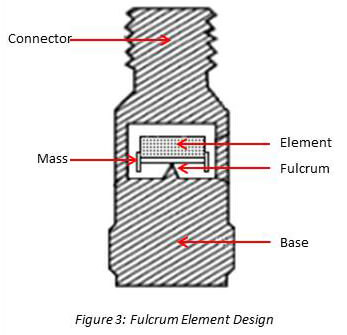IMI Sensors Displacement Sensor for Ultra Low Frequency Applications
A Revolutionary Addition to the field of 4-20 mA Vibration Trending
The difference between slow-speed and high-speed industrial machinery is not in if they should be monitored for vibration but in how they should be monitored for vibration as all industrial equipment can fall victim to catastrophic failures.
Vibration is typically quantified via one of three units of measure:
- Displacement- Displacement measures the length of the shortest path between the final point and initial point of an object and is most commonly measured in mils (0.001 inch) or millimeters.
- Velocity- Velocity is change in displacement per a given time period and is most commonly measured in inches per second (ips) or millimeters per second (mm/s).
- Acceleration- Acceleration is change in velocity per a given time period and is most commonly measured in g’s or meters per second squared (m/s2)

The most appropriate unit of measure generally depends on the frequency of the vibration. Low-frequency vibration produced by slow-speed industrial machinery produces only a small amount vibration in terms of acceleration, moderate vibration in terms of velocity but substantial vibration in terms of displacement because of its low-speed vibration. Conversely, high-frequency vibration produces only a small amount of vibration in terms of displacement, moderate vibration in terms of velocity but substantial vibration in terms of acceleration because of its high-speed vibration. See Figure 1 for guidance as to when vibration should be measured in acceleration, velocity or displacement.

When it comes to vibration monitoring in displacement of slow-speed machines, IMI Sensors’ Model 653A01 displacement sensor with an embeddable accelerometer is an ideal solution. (See Figure 2.) The sensor has a measurement range of 2 to 40 mil peak-to-peak and a frequency range of 1.5 to 300 Hz. It offers a broader frequency and amplitude range, greater ruggedness and easier installation compared to other alternatives such as a proximity probe.
Because the embeddable accelerometer measures the vibration in acceleration and then double-integrates into displacement by the internal electronics, noise is an important issue that must be managed. Because slow-speed machinery produces very little vibration in terms of acceleration, the situation can be likened to dropping a pin in that the sound of the pin may be discernible in a quiet room but would likely not be able to be heard in a noisy room. Just how little discernible acceleration is there? At the minimum frequency and minimum displacement measurement of Model 653A01 (1.5 Hz and 2 mils), the acceleration is a mere .0002 g. Even when the frequency is increased to 10 Hz (maximum frequency at which measurements are suggested in displacement) and the displacement value is increased to 40 mils (maximum displacement value of Model 653A01), the acceleration is still only 0.2 g.

With acceleration values that low, the signal can easily get lost in the noise floor if the sensor is not capable of producing a strong mV/g output signal without the use of amplifier gain. When gain is required to strengthen the signal, the gain also inadvertently increases the noise levels as well. In the case of Model 653A01, a strong output signal is ensured with the use of an element in a flexural design. (See Figure 3.) In the flexural design, the piezoelectric element is secured to the seismic mass in the form of a double cantilever beam. Because of their very high output (up to 100 V/g), flexural designs excel in low level, low frequency applications.
Not only does the stronger output signal of the flexural design reduce the need for overall signal gain, it also helps to offset the noise introduced into the signal during the double integration of the signal from acceleration to displacement. During the double integration process, the sensor’s electronics amplifies the low frequency portion of the signal and filters out the high frequency portion of the signal. Low frequency gain also amplifies and accentuates low frequency noise of both the accelerometer and instrument. As with overall signal gain, the gain of the low frequency portion of the signal also inadvertently amplifies the noise associated with that low-frequency signal.
Once the signal is double-integrated from acceleration to displacement, the signal is converted from high-impedance to low impedance and is then output as a 4-20 mA signal, providing continuous monitoring and vibration trending abilities as well as easy integration with PLC, DCS and/or SCADA system.
The displacement sensor is constructed for demanding 24/7 vibration monitoring applications with a hermetically-sealed, stainless steel housing and a 2-pin MIL-C-5015 top connector. When powered by a standard current loop, the sensor simply plugs right in to an open channel on the plant control system. The sensor can also be powered by a DC power supply. Reverse-wiring protection allows for the most simple of electrical installations.